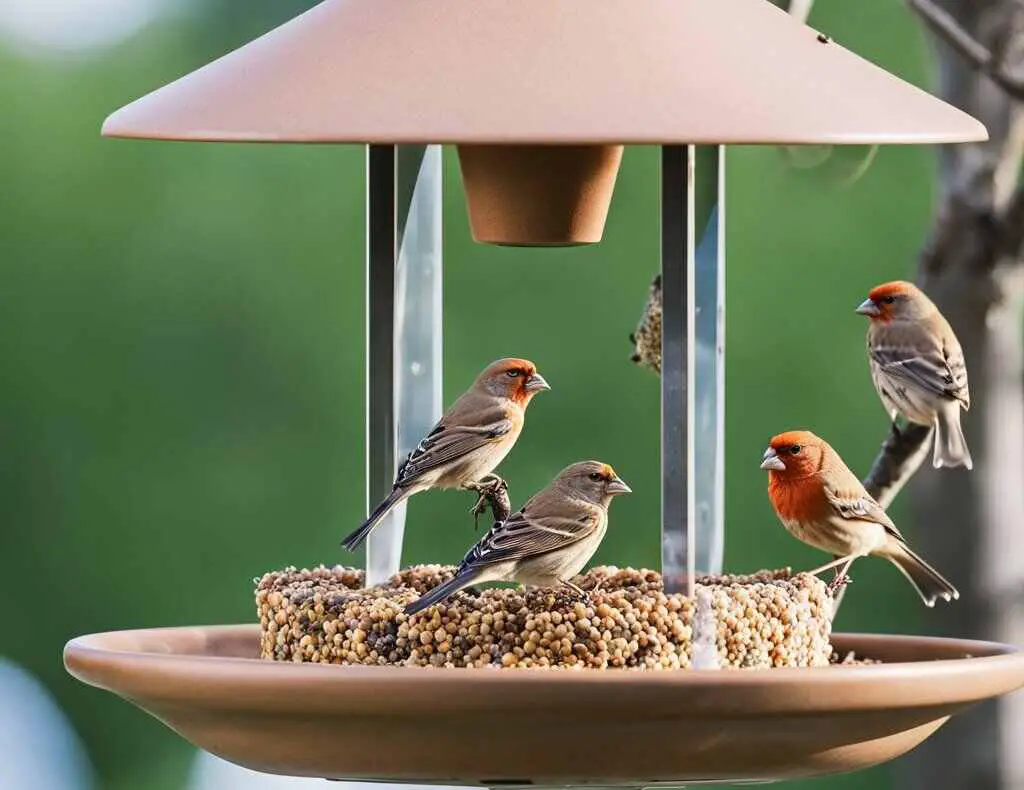Gazing out my window, watching the birds feed at my bird feeder, I can’t help but wonder how they found it in the first place. How do they navigate to a small, often camouflaged bird feeder from miles away?
That question has always fascinated me, and as a devoted bird enthusiast, I decided to dive deep into this mystery and uncover the secrets behind avian navigation and feeding behavior.
Table of Contents
- 1 Key Takeaways
- 2 How Do Birds Find Bird Feeders?
- 3 Understanding Bird Feeder Attraction Techniques
- 4 The Search Patterns of Birds
- 5 Bird Feeder Discovery: How Birds Spot Feeders
- 6 Bird Feeder Location: The Key to Attraction
- 7 Bird Feeder Navigation: Finding the Way
- 8 Bird Feeding Habits: A Closer Look
- 9 Attracting Specific Bird Species to Your Feeders
- 10 Conclusion
- 11 FAQs
- 11.1 How do birds find bird feeders?
- 11.2 What techniques can I use to attract birds to my bird feeders?
- 11.3 How do birds search for bird feeders?
- 11.4 How do birds spot bird feeders?
- 11.5 Where should I place my bird feeder to attract birds?
- 11.6 How do birds navigate to bird feeders?
- 11.7 What are the feeding habits of birds?
- 11.8 How can I attract specific bird species to my feeders?
- 12 Author
Key Takeaways
- Understanding bird feeder attraction techniques is the key to attracting wild birds to feeders
- The search patterns, navigation, and feeding habits of birds all play a role in finding bird feeders
- Bird feeder placement and accessories are crucial factors in attracting specific bird species to your feeders
- Creating a welcoming environment for avian visitors involves implementing a combination of strategic feeder locations, feeder types, and food offerings
- By implementing the techniques discussed in this article, you can create a beautiful backyard oasis that attracts a diverse range of bird species
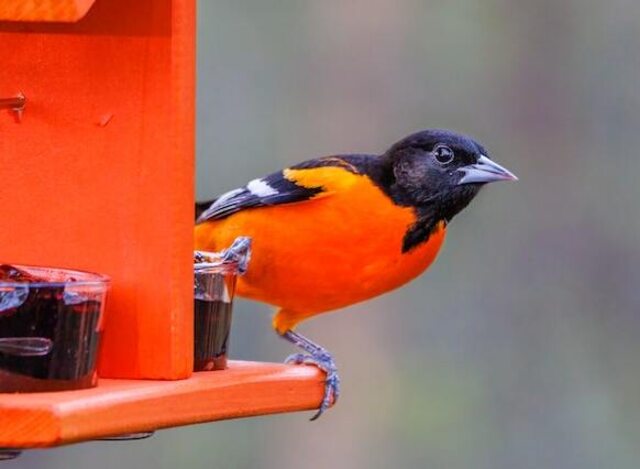
How Do Birds Find Bird Feeders?
Birds employ various strategies to locate bird feeders, ensuring a reliable food source. Their exceptional vision allows them to spot feeders from a distance, recognizing their shape, color, and any movement around them.
Memory and experience play a significant role; birds with keen recollection return to known food sources. Social learning is prevalent, with one bird’s discovery often attracting others, especially among flocking species.
Auditory clues may also draw birds, as they recognize feeding sounds. Environmental factors, such as food availability and shelter, influence their choices. Interestingly, some bird seeds, particularly those with strong odors, can attract birds using their sense of smell, especially in species like parrots.
These adaptive strategies showcase the resourcefulness of birds in finding sustenance and guide bird enthusiasts in effectively attracting avian visitors to their yards.
Understanding Bird Feeder Attraction Techniques
Attracting birds to your bird feeders can be a challenging but rewarding task. There are several techniques that you can use, which include:
Bird Feeder Placement
Where you place your bird feeder is crucial in attracting birds. Consider placing your feeder in an area with natural cover, such as a tree or a hedge, to provide birds with a place to hide from predators. Ensure the feeder is placed in a visible spot so that birds can easily see it when flying by. Also, make sure to keep the feeder away from any windows or reflective surfaces, which can confuse birds and cause accidents.
Bird Feeder Selection
The type of bird feeder you choose will depend on the species you wish to attract. Different birds prefer different types of feeders. For example, tube feeders are perfect for small birds like finches and chickadees, while platform feeders are suitable for larger birds like jays and cardinals. Be sure to select a feeder that will accommodate the type of food you plan to offer.
Bird Feeder Timing
The timing of bird feeder placement can have a considerable impact on the birds’ attraction. In general, it is best to set out feeders during the winter months when natural sources of food are scarce. However, if you live in an area with a mild climate, you may consider offering bird food year-round.
Bird Feeder Maintenance
It is essential to maintain your bird feeders regularly. Clean your feeders at least once a month to prevent bacteria buildup, which can cause illness in birds. Also, be sure to keep your feeder well-stocked with fresh food. Birds are more likely to visit feeders that offer a consistent supply of food.
Types of Bird Feeders
There are several types of bird feeders to choose from, including tube feeders, hopper feeders, suet feeders, and platform feeders. Be sure to select a feeder that is appropriate for the species you wish to attract. You may also consider offering a variety of feeders to attract a broader range of bird species.
The Science of Bird Feeder Attraction
The science behind bird feeder attraction is complex. Birds are attracted to feeders for various reasons, including access to food, shelter, and safety. By creating a bird-friendly space that provides these essentials, you can attract a diverse range of species. Also, consider the color and design of your feeder. Brightly colored feeders with intricate designs tend to attract more birds than plain or simple feeders.
“Attracting birds to your bird feeders can be a fun and rewarding hobby. By using the right techniques, you can create a bird-friendly environment that attracts a variety of species to your backyard.”
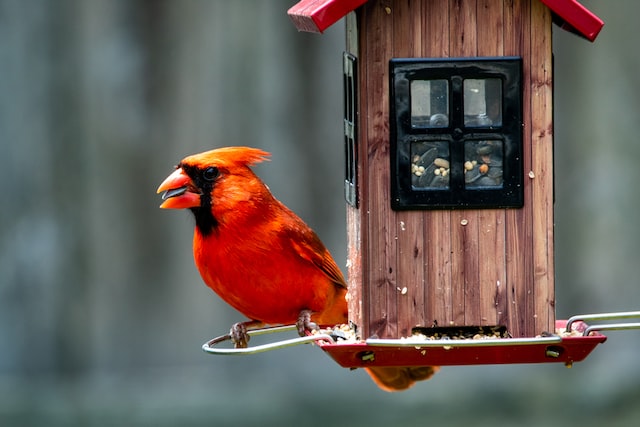
The Search Patterns of Birds
One of the most intriguing aspects of bird behavior is their search patterns. Birds use various navigational and foraging techniques to locate food sources, including bird feeders. Understanding these patterns is crucial to creating an effective bird feeding station that attracts a diverse range of species.
When searching for food, birds generally employ two primary methods: area searching and route searching. Area searching involves an intensive search of a specific location for food sources. Birds employ this method when they are familiar with an area and know it has food available, such as a reliable bird feeding station.
On the other hand, route searching is used when birds are traveling through unfamiliar territory and must find food along the way. In this case, they rely on visual cues and landmarks to locate potential food sources, such as a bird feeder in a residential area.
Visual Cues and Landmarks
Visual cues play a significant role in how birds find food sources. For example, birds can pick up on the colors and shapes of a bird feeder from a distance, especially if it offers a stark contrast against its surroundings. Landmarks such as trees, buildings, and other structures can also provide important cues for birds to locate food.
Birds also rely on their exceptional navigation skills to locate bird feeders. One of the most impressive of these skills is magnetoreception, the ability to detect the Earth’s magnetic field and use it for navigation. Birds use this ability to map their positions and orient themselves in relation to their destination, such as a bird feeder.
Another navigation skill that birds possess is celestial navigation. They use the position of the sun, as well as the stars, to determine their location and direction. This skill is particularly useful for birds that migrate over long distances and rely on accurate navigation to reach their destination.
Feeding Habits
Finally, a bird’s feeding habits can also influence its search patterns. For example, birds that are more opportunistic feeders may scan the area more broadly in search of food, while more specialized feeders may concentrate their search in a specific area.
Understanding the search patterns of birds is essential to attracting a diverse range of species to your bird feeder. By providing visual cues, utilizing landmarks, and understanding their navigation and feeding habits, you can create a welcoming environment for birds to visit and explore.
Bird Feeder Discovery: How Birds Spot Feeders
Observation is key when it comes to understanding how birds spot bird feeders in their surroundings. By paying attention to their behavior, we can create the perfect feeder and accessories to attract them.
“Birds are very observant creatures, and they notice everything around them. They are always on the lookout for potential food sources, and a bird feeder is one of the easiest things for them to spot.”
To help birds spot your feeder, it’s essential to place it in an area that’s easily visible and accessible. Birds are more likely to find your feeder if it’s situated in an open area and not obstructed by any objects.
DIY bird feeders can also be a great way to catch the attention of birds. Using materials like pinecones, fruit, or seed balls, you can create unique feeder designs that stand out in the natural environment. The key is to make sure that the feeder offers easy access to the food and is sturdy enough to hold the weight of the birds that visit it.
Accessorizing your bird feeder can also help attract birds. For example, adding a water source or placing a tray underneath the feeder can provide birds with easy access to drinking water, making it more likely for them to return to the area. Additionally, using different types of feeders such as hopper feeders or suet feeders can also attract different bird species.
| DIY Bird Feeders Ideas | Description |
|---|---|
| Fruit Feeder | A DIY bird feeder made from halved oranges, grapefruits, or apples, with the flesh removed. These feeders are perfect for attracting fruit-loving birds such as orioles and tanagers. |
| Seed Ball Feeder | A DIY bird feeder made from mixing birdseed and suet and forming them into balls. These feeders are perfect for attracting small birds like finches and sparrows. |
| Pinecone Feeder | A DIY bird feeder made by spreading peanut butter on pinecones and rolling them in birdseed. These feeders are perfect for attracting chickadees, nuthatches, and woodpeckers. |
Bird feeder observation is a critical factor in attracting birds. By paying attention to their behaviors and preferences, we can create the perfect feeder and accessories to catch their attention and ensure their return.
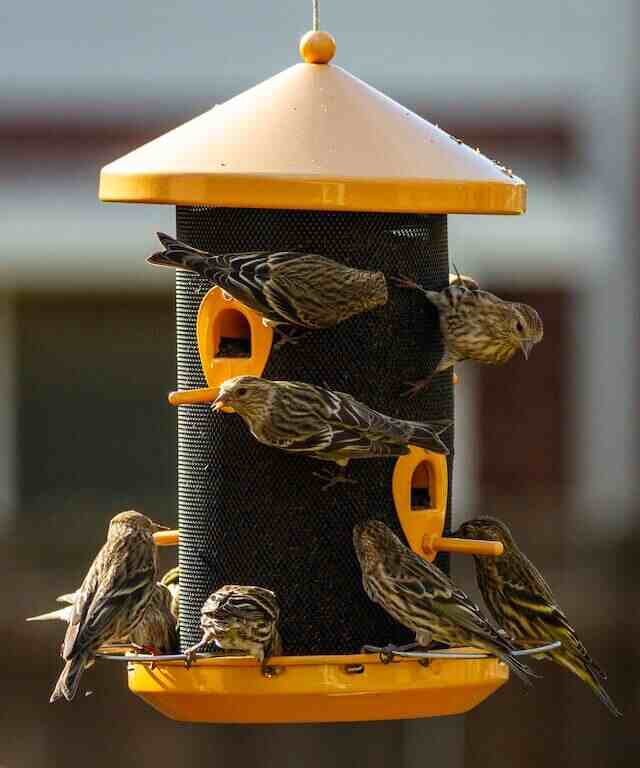
Bird Feeder Location: The Key to Attraction
If you want to attract a variety of birds to your feeder, location is key. Placing your feeder in the right spot will make all the difference in the world. Here are some things to consider:
Safety
Safety should be a top priority when choosing a location for your bird feeder. You want to make sure that the birds can feed safely without any threats from predators. Place your feeder near a tree or bush where birds can quickly take shelter if they feel threatened.
Accessibility
Make sure to place your feeder in a location that is easy for birds to access. Avoid placing it too high or too low; most birds prefer to feed at a height between 5 and 6 feet. Also, keep in mind that birds prefer to approach feeders from cover, so try to create a clear flight path to the feeder.
Natural Habitat Preferences
Different species of birds prefer different types of habitats. Some birds prefer open fields, while others prefer wooded areas. Try to place your feeder in a location that mimics the natural habitat of the birds you want to attract. For example, if you want to attract finches, place your feeder near a stand of trees or bushes.
Visual Appeal
The visual appeal of your feeder can also affect its success. Placing it near a window or in an area with some landscaping can make it more attractive to birds. Additionally, you can add some accessories to your feeder, such as colorful ribbons or a tray of water, to make it more visually appealing.
By keeping these factors in mind, you can find the ideal location for your bird feeder that will attract a variety of species and provide a safe environment for them to feed.
Have you ever wondered how birds navigate to bird feeders, even from long distances? It’s a fascinating topic that has been the subject of many scientific studies.
One of the ways birds find their way is through magnetoreception, which is the ability to sense the earth’s magnetic field. This enables them to navigate accurately during migration and also find their way to bird feeders. Studies have shown that birds’ eyes contain a protein called cryptochrome, which helps them see the earth’s magnetic field.
Another way birds navigate is through celestial navigation. This is the ability to use the position of the sun and stars to determine their location and direction. This method is especially useful for birds that migrate long distances, such as the Arctic Tern, which travels up to 44,000 miles each year.
| Bird Species | Navigation Strategy |
|---|---|
| Rufous Hummingbird | Uses landmarks such as trees and buildings to find their way to feeders. |
| Chickadee | Remembers the location of several food sources and uses a mental map to find them. |
| Woodpecker | Uses its excellent vision to spot bird feeders from a distance, then navigates towards them. |
To make sure birds can find your bird feeder, it’s important to keep it in the same location and maintain a consistent food source. Birds will remember the location of a reliable food source and return to it regularly.
In conclusion, the navigation skills of birds are truly remarkable, and understanding how they navigate can help us create a welcoming environment for our feathered friends. By providing a consistent food source and keeping the location of the bird feeder consistent, we can help birds navigate their way and enjoy the benefits of our bird feeding stations.
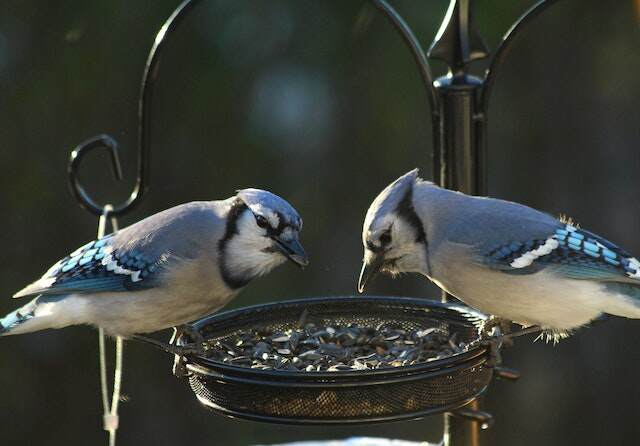
Bird Feeding Habits: A Closer Look
Observing the feeding habits of birds can reveal valuable insights into their behavior and help in attracting them to your bird feeders. Understanding what birds prefer to eat, how often they need to eat, and the quantity of food they consume can guide you in creating a bird-feeding station that meets their requirements.
Birds have diverse dietary preferences, and their feeding habits can vary significantly depending on factors such as season, habitat, and food availability. For example, some bird species prefer to feed on insects, while others prefer seeds or fruit. It’s essential to identify the birds that frequent your backyard to determine their dietary requirements.
Researching the feeding habits of specific bird species can help guide you in choosing the right types of food and feeders. For instance, larger bird species such as Blue Jays and Woodpeckers prefer larger seeds like sunflower seeds, while smaller birds like finches and sparrows prefer smaller seeds such as millet.
“It’s essential to identify the birds that frequent your backyard to determine their dietary requirements.”
Another essential aspect of bird feeding habits is feeding frequency. For some bird species, a single feeding session can supply the energy they need to last the entire day, while others feed more frequently, requiring several meals throughout the day. Understanding the feeding habits of the birds that frequent your feeders can help you determine the ideal times to fill your feeders.
In addition to identifying feeding habits, it’s also important to be mindful of the quantity of food birds consume. Providing too much food at a time can attract more birds than your feeders can accommodate, leading to competition and aggression among the birds. It’s crucial to refill the feeders regularly to prevent them from becoming empty or overfilled.
Examples of Common Feeding Habits in Birds:
| Bird | Dietary Preferences | Feeding Frequency | Quantity |
|---|---|---|---|
| Blue Jay | Sunflower seeds, peanuts, suet, insects | Once or twice a day | Large quantities |
| Chickadee | Black-oil sunflower seeds, safflower seeds, suet | Several small meals throughout the day | Small quantities |
| American Goldfinch | Thistle seed, sunflower chips, Nyjer seed | Several small meals throughout the day | Small quantities |
By understanding the feeding habits of birds, you can provide a bird-feeding station that meets their specific requirements, attracting a diverse range of species to your backyard. It’s essential to choose the right food and feeder designs and be mindful of feeding frequency and quantity to create a safe and welcoming environment for your feathered friends.
Attracting Specific Bird Species to Your Feeders
One of the joys of bird watching is witnessing a variety of species flocking to your bird feeders. However, attracting specific birds can be challenging. Understanding their dietary preferences and feeding habits can help you create an environment that is inviting to the species you desire.
Feeder Designs
The type of bird feeder you choose can play a significant role in attracting specific bird species. For example, tube feeders with small feeding ports are ideal for attracting small finches like goldfinches or siskins. On the other hand, platform feeders that offer a larger surface area are perfect for ground-feeding birds like juncos or doves.
You can also consider investing in specialized feeders that cater to specific species. For instance, if you want to attract hummingbirds, a nectar feeder that mimics flowers can be a great choice. Alternatively, offering suet blocks can be an excellent way to attract woodpeckers to your yard.
Food Choices
When it comes to enticing specific bird species, food choices are crucial. Different birds have different dietary needs, and offering the right type of food can make all the difference. For example, black-oil sunflower seeds are a favorite of many birds, including chickadees, jays, cardinals, and grosbeaks. Nyjer, also known as thistle seed, is a popular choice for finches like goldfinches and siskins.
If you want to attract brightly colored birds like orioles or tanagers, consider offering fruit. Orange halves, apple slices, and grapes can be an irresistible treat for these species. Additionally, mealworms are a great source of protein that appeals to a wide range of birds, including bluebirds, wrens, and woodpeckers.
Environmental Factors
Creating a bird-friendly environment can also help attract specific species to your feeders. For example, planting native flora can provide a natural source of food and shelter for birds that are endemic to your region. Similarly, offering nesting boxes or bird baths can help create a welcoming environment for breeding birds.
It is also important to note that certain environmental factors, such as light and noise pollution, can deter birds from visiting your feeders. Choosing a location that is relatively quiet, away from traffic, and with enough shade can make your feeding station more appealing to birds.
Patience and Persistence
Attracting specific bird species to your feeders can take time and patience. Even if you have the right feeder, food, and environment, birds may take some time to discover your feeding station. However, with persistence and a little bit of luck, you can create a bird-friendly oasis that is full of life and color.
Conclusion
Understanding how birds find bird feeders is a fascinating topic that requires knowledge of their navigation skills, feeding habits, and strategic placement of feeders. By implementing the techniques discussed in this article, you can create a bird-friendly space that attracts a diverse range of species, allowing you to witness the beauty of nature up close.
The Joy of Bird Watching
Creating a bird-friendly space is not only rewarding, but it also provides an opportunity to observe and appreciate the diverse range of bird species that exist in our world. Through bird watching, we can connect with nature and gain a deeper understanding of the environment around us.
Continued Learning and Exploration
As with any hobby, there is always more to learn and explore when it comes to bird feeding and watching. I encourage you to continue your education and research on the topic, as it will only enhance your appreciation for these extraordinary creatures.
Thank you for joining me on this journey of unraveling the mystery of how birds find bird feeders. Happy bird watching!
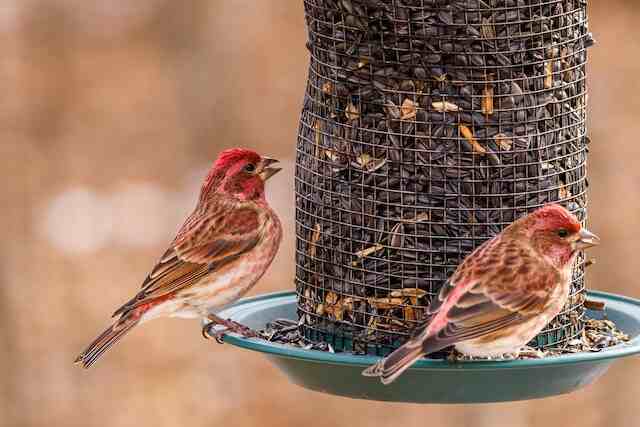
FAQs
How do birds find bird feeders?
Birds find bird feeders through a combination of their navigation skills, visual cues, and foraging habits. They use landmarks, celestial navigation, and even magnetoreception to locate feeding opportunities.
What techniques can I use to attract birds to my bird feeders?
There are several techniques you can employ to attract birds to your bird feeders. These include selecting the right type of bird feeder, placing it in a safe and accessible location, timing your feeding sessions, and maintaining a clean and well-stocked feeding station.
How do birds search for bird feeders?
Birds employ various search patterns to locate bird feeders. They rely on their visual acuity, foraging instincts, and familiarity with their surroundings to search for feeding opportunities. These search patterns can differ depending on the bird species and their natural habitat preferences.
How do birds spot bird feeders?
Birds spot bird feeders through observation and recognition of visual cues. They are attentive to changes in their environment and quickly identify feeders based on their shape, color, and movement. DIY bird feeders and the use of accessories can also enhance their visibility.
Where should I place my bird feeder to attract birds?
The location of your bird feeder plays a crucial role in attracting birds. It should be placed in a safe and accessible area, away from potential predators. Consider the natural habitat preferences of different bird species and provide shelter, water sources, and suitable perching spots nearby to create an inviting environment.
Birds navigate to bird feeders through remarkable abilities such as magnetoreception and celestial navigation. They can sense the Earth’s magnetic field and use it as a compass, while also relying on the position of the sun, stars, and landmarks to orient themselves and find their way to feeders.
What are the feeding habits of birds?
Birds have diverse feeding habits influenced by their dietary preferences and foraging strategies. They vary in the types of food they consume, feeding frequencies, and the amount of time they spend at feeders. Understanding these habits can help you attract specific bird species to your feeders.
How can I attract specific bird species to my feeders?
To attract specific bird species to your feeders, you can provide the foods and feeder designs that appeal to them. Research the preferences of the birds you wish to attract and ensure your feeders meet their needs. Creating a welcoming environment with suitable perching areas, water sources, and appropriate vegetation can also help attract desired species.

